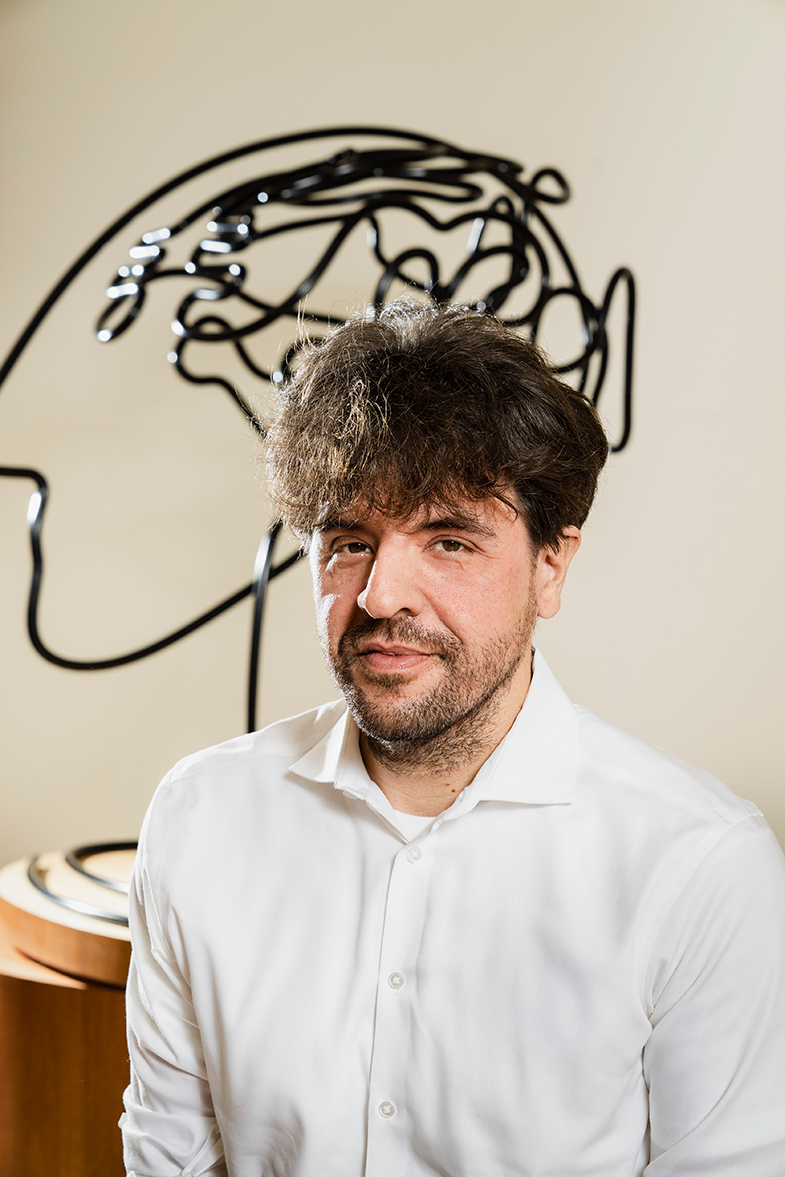The Royal Netherlands Academy of Arts and Sciences has awarded the Dr A.H. Heineken Prize for Medicine 2020 to Karl Deisseroth, Professor of Bioengineering and of Psychiatry and Behavioural Sciences at Stanford University in California, and Investigator of the Howard Hughes Medical Institute in Maryland, USA. Deisseroth is receiving the prize for developing optogenetics — a method to influence the activity of nerve cells with light — as well as for developing hydrogel-tissue chemistry, which enables researchers to make biological tissue accessible to light and molecular probes. Both discoveries play an important role in current brain research.
Deisseroth took brain research a decisive step further
Deisseroth discovered that it is possible to use light of a certain wavelength to switch on a certain group of nerve cells, and if desired at the same time switch off another group with light of a different wavelength. This capability enables spectacular effects, such as influencing an individual subject’s perceptions and movements, and even higher brain functions. One can, for example, alter learning and memory, or change the motivation of an individual for specific actions. Already used around the world for scientific discoveries, optogenetics marks the onset of a true revolution in both basic science and neuropsychiatry, leading to mechanistic research and understanding of crippling conditions such as blindness, Parkinson’s disease, epilepsy, addiction, and depression.
The light-sensitive and transparent brain
Deisseroth first published on his optogenetics discovery in 2005. It had been known for many decades that some microorganisms have light-sensitive ion conduction (through pumps and channels). For example, certain algae are dependent on light to guide movement; when light shines on them, ion channels open and positively-charged ions flow into the cell, causing the single-celled alga to swim towards the light. In July 2004, Deisseroth succeeded in implanting the DNA that encodes these channels into rodent nerve cells and causing light-sensitivity, and over the next decade he developed ways to target specific nerve cell types — and even single cells — in living mice. As a result the targeted cells in the brains of mice could be stimulated with light to control behavior, far more precisely than with medication or electrical stimulation which affect multiple groups of brain cells.
In 2013, Deisseroth and his colleagues introduced another important technology, hydrogel-tissue chemistry. The initial form, called CLARITY, is a way of making brain tissue transparent and accessible to molecular labels, thus allowing researchers to see more clearly how the brain is constructed. Conventional microscopy techniques show nerve cells in detail, but these are two-dimensional images of wafer-thin slices. Some scanning technology, such as MRI and CT, displays three-dimensional images, but shows no details of cells. Achieving transparency through creation of a hydrogel-tissue hybrid, researchers can search through intact brain tissue and investigate which cells are connected and what kind of information they transmit; hydrogel-tissue chemistry variants have also allowed visualizing proteins anchored deep within tissue, reversibly changing tissue dimensions, and labeling and sequencing of RNA molecules in cells within native environments. Widely used for scientific discovery, these methods have also been applied by Deisseroth and colleagues to human tissue, including in patients with autism, epilepsy, and Alzheimer’s disease.
About the laureate
Karl Alexander Deisseroth was born in Boston (Massachusetts) in 1971 and studied biochemistry at Harvard University. He works one day a week in the clinic as a psychiatrist, spending the rest of his time on fundamental neuroscience research. Deisseroth has a tremendous record of achievements, as appears from his many discoveries and publications. In 2010 the journal Nature Methods proclaimed optogenetics to be its “Method of the Year”. Over the past ten years, Deisseroth has received more than 80 patents for his development of optogenetics and related technologies.
Deisseroth has won dozens of fundamental science prizes, including the McKnight Foundation Scholar Award, the National Academy of Sciences Lounsbery Award, the Breakthrough Prize, the Else Kröner Fresenius Prize for Medical Research, and the Kyoto Prize. Last year the journal Nature Biotechnology declared him the Number 1 “translational researcher across all fields”. He is an elected member of all three US National Academies (Sciences, Medicine, and Engineering).
